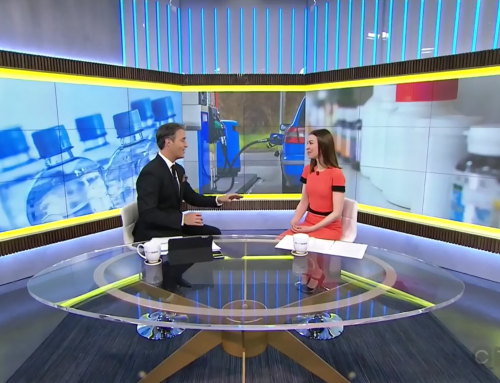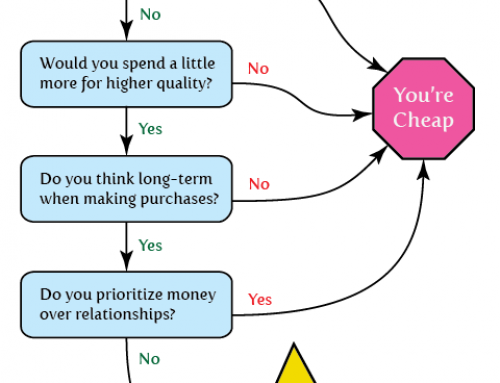Let’s buck convention.
Yes, you can tackle the traditional financial tasks in the New Year (or any time of year) by building a budget, tracking spending, and paying yourself first, but sometimes adding a few unconventional strategies into the mix can add to your bottom line too.
I’m not offering you a shortcut to building wealth — you have to do the work by saving one dollar at a time. But adding a few (or all) of these unconventional saving strategies to your day could add up to thousands saved over the year.
1. Produce less grocery garbage.
Food is so plentiful these days we’re throwing it away.
Recent studies by the United Nations and the Canadian Value Chain Management Centre have found that Canadians throw out 25% of their groceries every year. With Canadians spending an annual average of $7,262 per household on food (StatsCan), families could save around $1,800 by garbaging less grub.

The Solution: Get into the habit of creating a grocery shopping list by taking inventory of what you need before hitting the store. With list in hand, create a weekly menu plan and aim to use all your fresh ingredients to avoid spoilage.
Making shopping lists and finding recipe ingredients on sale is easy to do with your smartphone or tablet by using an app like Flipp to scan weekly flyers and deals. Flipp helps you create a shopping list and add grocery sales instantly, and with fewer flyers hitting your doorstop you’re saving trees too.
Make a grocery list: You’ll save your sanity by remembering to buy bananas.
Use Flipp to:
- Search: Find fresh, frozen, and packaged grocery items fast by searching hundreds of sales across dozens of local flyers.
- List: Clip sale items to your shopping list and prevent food waste by buying only the groceries you need. Stick to your list to stay on budget and avoid impulse spends.
- Compare: See which grocers offer the best deals on produce, dairy, meat, and grains.
I’ve saved anywhere from $5 to $100 in a week by using Flipp to shop grocery sales and by price matching everything from peanut butter to dish soap.
Need more inspiration? Check out my insanely popular series, Squawkfox Food Waste Challenge to not only reduce food waste but to get your kitchen in order. My fridge, freezer, and pantry organization graphics are all over Pinterest too.
2. Curb your collecting.
What do you collect? Open your closets, survey the garage, and take a good look around your home. A collection isn’t just a set of items made in limited production runs like coins, stamps, or sports cards — it can be any stash of similar stuff like clothing, books, gadgets, or gear. A collection is anything you’ve amassed over time.

In my post The Cost of Collecting I share my affinity for blue pants, all 30 pairs of them. Some of you laughed, others cried. Don’t let the collecting tick cost you.
The Solution: Find your collection and estimate the total cost. How much space do you own, rent, or mortgage to keep the stuff around? Be aware of your collecting weaknesses and triggers. The money saved depends on your collection and your ability to break the habit.
3. Ask for a better deal.
Many Canadians tend to accept a sticker price or a posted financial rate because we are comfortable with fixed, clearly labelled price tags. The problem is prices and rates are flexible everywhere, so we’re overpaying for products and services with nearly every purchase.
The Solution: Asking for a better deal is free. Don’t be afraid to ask the question, “Is this the best price you can offer me?” By using this line I’ve negotiated prices on everything from my kitchen table to lower rates on my cell phone plan. Your financial institution is willing to deal too, so don’t be afraid to ask for lower credit card rates, free chequing accounts, and preferred terms on your mortgage. You could save thousands of dollars over the next year just by asking.
See The Definitive Guide: 22 Ways to get a discount on anything to see the savings.
4. Impulse spending.
Stores are set up to get savers to fail. Grocery stores, pharmacies, and every retailer in the mall know that sale signs, loyalty cards, and fancy table displays lure shoppers on impulse and convince them to buy stuff they didn’t intend to purchase. According to the BMO Psychology of Spending survey, Canadians spend $3,720 per year on stuff they want but do not need, with clothing, dining out, shoes, and books topping the list of stuff we buy on impulse.
The Solution: Marketers are brilliant at getting us to spend money, so combat your impulses by knowing their game. Always shop with a clearly defined list and strict budget in mind. Just because something is on sale doesn’t mean it’s a deal. Get wise to retailer tricks in Impulse buying is the Achilles’ heel of saving money and save your cash.
5. It’s not savings unless you save it.
Convincing yourself you saved $40 on a $100 sweater on sale for 40% off is a mind game that makes spending easier. The reality is you spent $60 and saved nothing.

The Solution: If you’re serious about saving cash, put those so-called $40 savings in a high interest savings account and really save them. If you can’t afford to put that cash away, then you probably shouldn’t have spent $60 on that sweater in the first place.
Using unconventional ways to save money works. Understanding your impulses, triggers and reasons for spending requires a shift in perspective and perhaps lifestyle, but making some of these changes over the year can add to your financial bottom line. Now get to work.
Love,
Kerry





Hi Kerry,
Do you have a spreadsheet that we can use to track our savings/ investments? Can it track our rate of return on our savings? Thanks for all of your great ideas.they make a big difference.
I managed to reduce the quantity of wasted food comparing with 4-5 years ago. I’m not a collector so I’m safe on this one. I still have some problems with minor impulse spending but I think I’m on a good track also.
I love the idea of using the app – Flipp to scan weekly deals and offers for groceries. I’ll definitely have to try it! Thanks for sharing.
[…] Superstar blogger Kerry Taylor told us about five unconventional ways to get your financial act together. […]
I don’t know if you would consider it unconventional, but what about moving? Nobody ever seems to consider it.
My moving closer to work you may save hundreds every month. My moving to a smaller, or otherwise less expensive home that can also be hundreds per month. My wife and I did this and it’s worked out great! Saved 14km each way for me and she saves 30 minutes each way on transit.
We have worked hard over the last few years to reduce our food waste, both for budget reasons and for the principle of it. But I have found that with the way some goods are bulk priced, it is still cheaper for me to buy more than I need and throw out anywhere from 1/4 to 1/2 of it. So frustrating!!
I agree – Canadians waste far too much food. I find myself pressed for time, so putting together shopping lists, going through flyers, and meal plans aren’t really for me. But I have been able to dramatically reduce my food waste by using one simple thing: MY FREEZER! 90 % of what people eventually throw out could have been frozen – the only exception I can think of is lettuce! Some veggies or fruits need to be blanched first, but this is a quick fix…
Yep, all leftovers go in the freezer; I also will freeze fruit and veggies if they have been in the fridge for a bit too long. By doing this, I have been able to have lots of ingredients on hand to make my work lunches, as well as lots of frozen leftovers from completed meals that are ready to go to work as a lunch.
Thanks for the tips, I learned a few new ones
Great article Kerry. This is a good reminder that the personal and household balance sheet includes managing the consumption side of the equation. A great analogy I’ve heard someone use is live your personal life the way you would run a business. If you don’t need something, don’t invest your money in it.
When my spouse and I were considering what joint credit card to keep, at first we looked at interest rates. Then we decided it didn’t matter, because we will never carry a balance anyway. We went with the one that has better customer service hours (it also has a low interest rate, but not as low as the one we didn’t choose) and a low yearly fee.
BTW – Thanks for all your advice Kerry, and for writing this blog. A short time ago I reached my goal of having a four-month emergency fund stashed away (I have more than that in cash actually, but some of it is earmarked for investments and taxes), and am completely consumer debt free (only mortgage now). Sometimes I look at my healthy bank balance, to reassure myself I don’t have to panic anymore about someone in my family getting sick or losing a job, and to remind myself of the peace of mind I would lose if I were to go on a spending spree. Keep it up!
This is great! We are trying to rethink our finances and an unconventional approach is something that really interests me. Impulse buying is most definitely my enemy 🙂 Ty
Cable. Now that is a huge drain on the wallet. Either that or satellite are a waste of money in today’s modern world of television. All TV shows are now accessible through the internet and they’re commercial free too. I haven’t had cable now for 6 years and thanks to no longer seeing commercials I’ve saved even more money by not spending on needless wants. Dump your cable, upgrade to unlimited internet, and get an android box or something comparable.